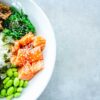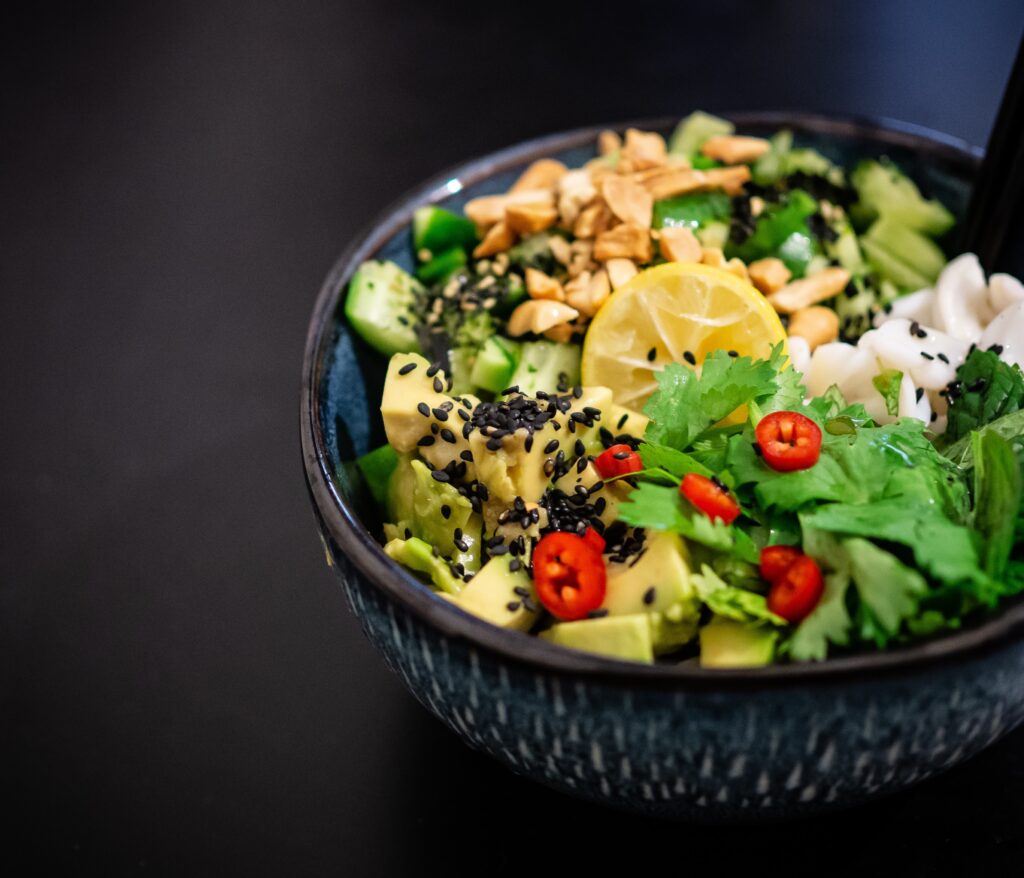
Why is it Called The Paleo Diet?
The Paleo Diet consists of foods that our ancient ancestors would have eaten, such as fresh fruits, vegetables, nuts and seeds, lean meats and seafood. By following this diet plan you are able to cut out processed sugars, refined salt and grains that can be causing inflammation in your body. A Paleo lifestyle is a great way for those who want to maintain their diet without feeling deprived or hungry all day long. In this blog post we are going to cover the basics of the Paleo Diet so you know exactly what it is about before diving into some delicious recipes!
The Stone Age Diet
The Paleo diet encourages you to savor the flavors of nature while avoiding processed foods with unhealthy additives. Have you ever wondered why it’s called Paleo?
Dr. Walter L. Voegtlin, a gastroenterologist, was the first to advocate paleolithic eating as a diet. His 1975 book, The Stone Age Diet, opened the door for various Paleolithic methods, all of which shared similar underlying concepts but had varied rules and limits.
The Paleo Diet Emphasizes Fresh Foods
Eating the Paleo way goes beyond simply avoiding junk food and emphasizes adding nutrient-dense, fresh foods to your diet.
Paleo is based upon the idea that humans evolved mainly by eating animals, nuts, and fruits. Its proponents argue that we can improve digestion and overall health by returning to a diet similar to what our ancestors ate.
Unlike other diets, it’s not focused on counting calories or macronutrients like fat, carbohydrates, and proteins.
Caveman Diet
The names “caveman diet,” “hunter-gatherer diet,” and, of course, “Paleo diet” are frequently used to describe these types of diets. Paleo originates from the foods that our Paleolithic ancestors ate.
The Paleo Diet Is Focused On Eating Clean
Paleo is a way of life primarily focused on eating clean, whole foods, including fruits, vegetables, and lean protein, and unlocking the power of nutrition from our ancestors with a Paleo diet!
It emphasizes grass-fed, wild-caught, and free-range options as much as possible, as these foods are generally healthier and of higher quality.
Grass Fed Meats
Enjoying grass-fed meats, healthy servings of fresh produce, and other whole foods is all a part of The Paleo diet. For those who want to embrace the lifestyle, low-fat dairy products are also allowed.
Additionally, it recommends limiting processed foods, sugar, and dairy products to achieve a healthier lifestyle.
However, if you’re aiming for complete authenticity, certain fruits or vegetables may be restricted due to their high fructose content. It also includes eating healthy fats from nuts, seeds, avocados, and olive oil.
Health And Fitness Goals
Paleo also helps people achieve their health and fitness goals: weight loss, improved energy levels, or decreased inflammation.
Following the Paleo Diet has many benefits. When you eat Paleo, you’re not only feeding your body the nutrients it needs to function optimally, but you’re also honoring the legacy of our ancestors.
The Paleo Diet Recommends Regular Physical Activities
Finally, it recommends regular physical activity and sufficient sleep to feel energized, active, and healthy. The Paleo diet is not just about food; it’s also about lifestyle changes.
This includes reducing stress levels, sleeping better, and engaging in activities that promote mental well-being. It encourages people to nourish their bodies.
What is the Paleo Diet?
Nutrient Dense Foods
The Paleo Diet is a lifestyle of eating whole, nutrient-dense foods that resemble those available to our pre-agricultural hunter-gatherer ancestors.
The Paleo Diet consists primarily of quality meats, seafood, eggs, vegetables, seeds, nuts, and fruit. Paleo-style meals include healthy fats from olive oil, avocados, coconut oil, and other sources.
As well as adding spices and herbs to your meals for an added punch of flavor without added sugar or unhealthy ingredients.
Supplement With Vitamins
Eating various quality foods will help provide the nutrients your body needs for energy and optimal health. You can also supplement with vitamins, minerals, and probiotics to further support your health goals.
These nutrient-dense foods will help you feel full, energized, and satisfied while providing the nutrients your body needs.
The Paleo Diet Incorporates These Foods For The Benefits
Try incorporating more of these foods into your diet and enjoy the health benefits of a Paleo Diet! Enjoy quality meats such as beef, chicken, turkey, and bison. Also include fish like salmon, mackerel, tuna, and trout.
Include lots of vegetables in your diet. Spinach, broccoli, sweet potatoes, Brussels sprouts, and peppers are good choices.
You can also add eggs to your meals for protein, healthy fats, and essential vitamins and minerals.
Be sure to drink plenty of water throughout the day to stay hydrated.
Primal Kitchen
Therefore, if you’re looking to jumpstart your Paleo journey, investing in high-quality ingredients and supplements from brands you trust is a good idea.
Select unique products from top brands like Primal Kitchen and Kite Hill, so you can rest assured knowing that you’re getting the best meal ingredients.
Healthy Fats
Healthy fats are part of a balanced diet. Foods such as avocados, nuts, and fish are all rich in healthy fats that can help your body function better.
Eating a variety of these types of foods can help improve brain health, reduce inflammation levels, and promote weight loss.
Adding some healthy fats to your daily meals will ensure you get the nutrients your body needs.
Natural snacks with added health benefits, such as dark chocolate, dried fruit, nut mixes, and Greek yogurt bars, are always excellent choices.
Reduce Inflammation
In addition, research has shown that the Paleo Diet can reduce inflammation, improve blood sugar levels, and promote heart health.
So if you’re ready to make a change, give the Paleo Diet a try! You may be surprised at how good you feel.
Paleo Diet Requirements
Organic Fruits And Vegetables:
Eating organic and free-range foods is an integral part of the Paleo lifestyle, as it means getting the highest quality food as close to its natural state as possible.
This is why Paleo eaters emphasize grass-fed/wild-caught animals, organic fruits and vegetables, and natural fats such as coconut or butter instead of highly processed vegetable oils.
This helps to ensure that any pesticides and herbicides used in farming won’t be ingested by you, allowing for a healthier eating experience with fewer toxins being consumed.
Natural Fats
So while the Paleo Diet appears simple on the surface, those who are deeply committed to its principles will always have some difficulty when it comes to identifying and sourcing quality ingredients.
The Paleo diet requires more natural forms of food groups than what is typically available.
The diet has few carbohydrates but a lot of lean protein and plant foods. These plant foods’ fiber, vitamins, minerals, and phytochemicals are a requirement.
Plant Foods
Unlike some other low-carb diets, the Paleo diet doesn’t recommend salty, processed meats and encourages eating certain fruits and vegetables.
Usually (but not always), leaving out dairy foods, cereal grains, starchy vegetables, and sugar. In favor of wild, lean animal foods, fruit, non-starchy vegetables, and honey.
Unsaturated fats like olive, flax, walnut, and avocado oils are good examples of unsaturated fats.
Avoid Modern Processed Food
Paleo followers strive to avoid modern processed food but also believe in eating nutrient-dense foods often found in modern supermarkets.
Try to limit or avoid processed foods such as white flour, refined sugar, and food additives.
By avoiding processed foods, you’ll be able to create a healthier diet and lifestyle that will leave you feeling energized each day and support your long-term health goals!
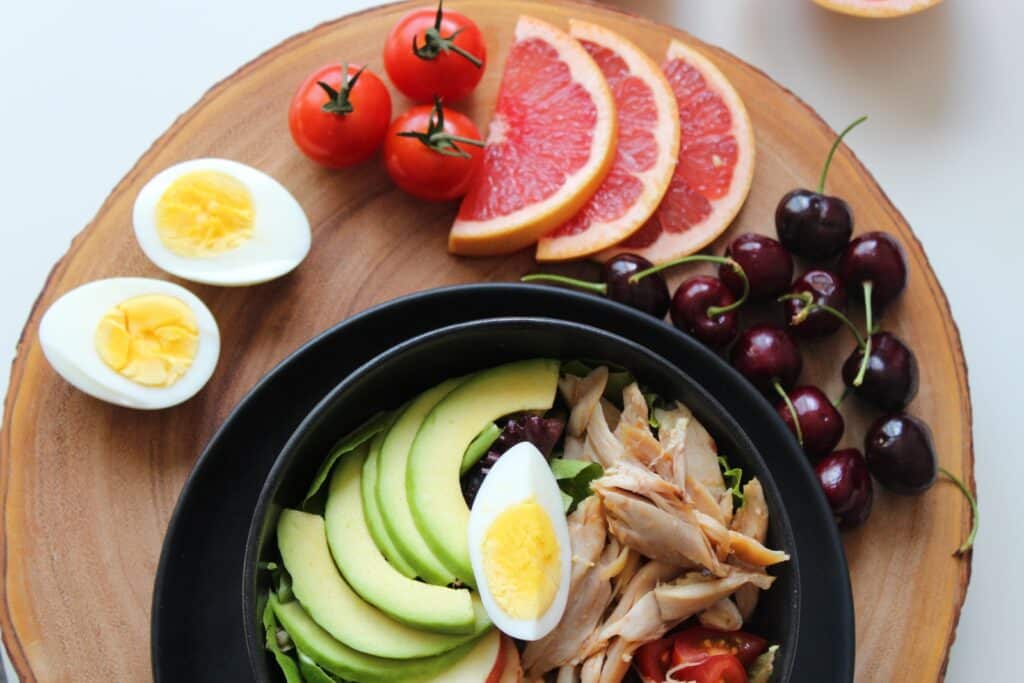
When it comes to Paleo-friendly recipes, you have plenty of options. You can focus on simple dishes like grilled chicken or steak or get a little more creative with things like stuffed peppers or portobello mushrooms.
If you are looking for delicious and nutritious ideas, here are three recipes you’ll love.
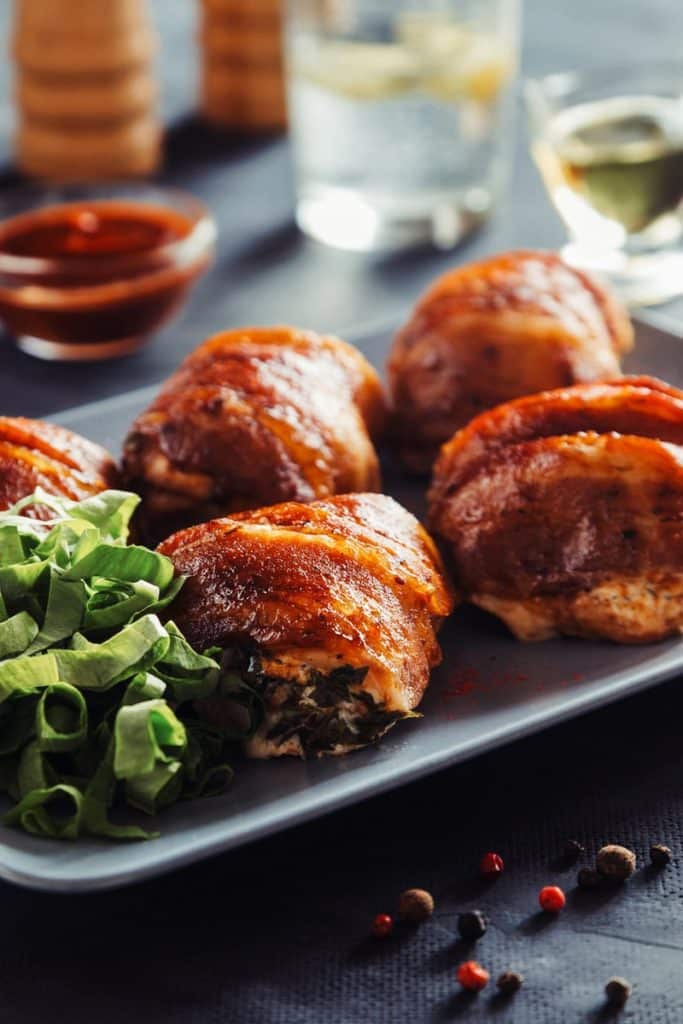
Ingredients:
- Boneless, skinless chicken thighs
- Bacon
- Onion powder
- Smoked paprika
- Black pepper
- Fresh herbs
Cut each chicken thigh in half. That way, you can get one piece of bacon wrapped around each piece. I used rosemary, thyme, and sage for the fresh herbs in this recipe, but you can use any fresh herbs you like.
Directions:
Step 1. Combine the spices in a bowl and sprinkle the mixture all over the chicken thighs.
Step 2. Heat a heavy-duty skillet over medium-high heat and heat your oven to 400 degrees. We’re going to take this chicken straight from the stovetop to range.
Step 3. Wrap a piece of bacon around the middle of each chicken piece. You should be able to wrap it around twice. Don’t worry about keeping the bacon in place – when you cook the chicken in the skillet, the bacon will crisp up and stay put.
Step 4. Add the bacon-wrapped chicken to the skillet and cook for about 2 minutes per side until browned. (No need for cooking fat to coat the skillet in this recipe! The bacon will do the job for you right in the pan as the fat renders off.)
Step 5. Transfer the skillet to the oven and cook for 10-15 minutes. The chicken should have no pink left, and the bacon should be crispy.
Step 6. Garnish the chicken with fresh herbs, then serve and enjoy!
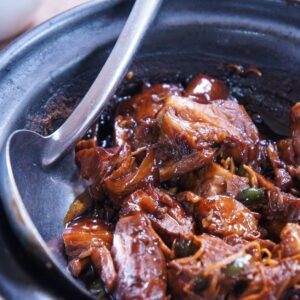
Here’s everything you’ll need for the best BBQ Chicken Bowls:
Kale slaw:
- kale slaw mix
- olive oil
- apple cider vinegar
- maple syrup (optional)
- garlic
- sea salt and black pepper
Chicken:
- boneless skinless chicken thighs
- sea salt and black pepper
- garlic powder
- onion powder
- chili powder
- smoked paprika
- BBQ sauce
Bowls:
- cauliflower rice
- minced garlic
- sea salt and black pepper
- Fresh lime juice
- Avocado
- Cilantro
- Diced Red Onion
- Extra BBQ sauce
- Paleo-friendly Ranch Dressing
How to Make Paleo BBQ Chicken Bowls
Make the kale slaw first. Mix all ingredients in a large bowl, cover, and allow it to sit while preparing the rest.
Sprinkle the chicken with a good amount of salt and pepper, plus the remaining seasonings. You will either grill or pan-fry the chicken.
Heat your grill or skillet over medium-high heat and coat with olive oil. Grill or fry the chicken on one side until browned and crisp, then flip and continue to cook until cooked through – about 5-6 minutes per side, adjusting the heat to avoid burning.
Once done, transfer to a cutting board and cover to keep warm.
In a skillet, warm the olive oil over medium heat. Add the cauliflower rice and garlic and sprinkle with salt and pepper. Saute until just softened, stirring as needed. Drizzle the juice of one or two limes over the rice, taste and adjust seasonings and remove from heat.
Slice the chicken as desired, then toss the slices in BBQ sauce to coat.
Add the cauliflower rice, chicken, and slaw to each bowl, then top with sliced avocado, diced red onion, cilantro, lime wedges, extra BBQ sauce if needed, and a drizzle of ranch.
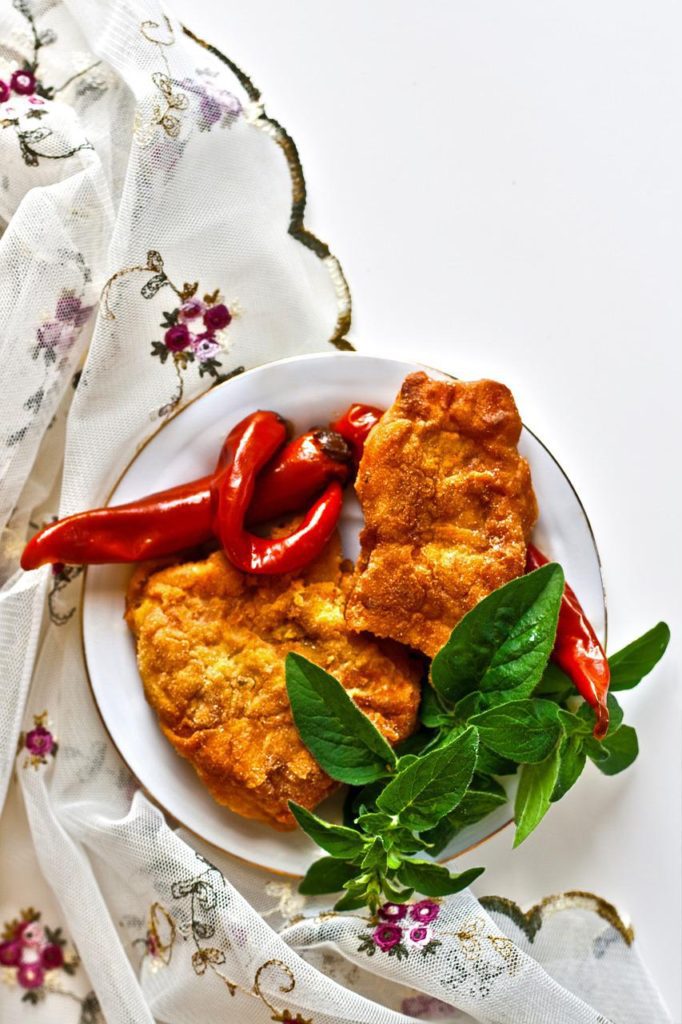
Ingredients:
- Four cod fillet pieces (6 ounces each)
- 4 tbsp lemon juice
- 7 tbsp olive oil, divided
- 2 tbsp coconut oil, melted
- ½ cup almond flour
- 1 tsp cumin
- 1 tsp paprika
- 1 tsp coriander
- ½ tsp black pepper
- Four cloves of garlic, minced
- ¼ cup fresh parsley, chopped, for garnish
- Lemon slices, for garnish
INSTRUCTIONS:
- Preheat the oven to 400°F. Use paper towels to pat the cod fillets dry.
- Whisk the lemon juice, five tablespoons of olive oil, and melted coconut oil in a shallow bowl. In another shallow bowl, combine the almond flour, cumin, paprika, coriander, and black pepper; this will be your dry mix.
- Dip each fillet into the lemon mixture before coating it with the dry mix, then set aside. Add the minced garlic to the remaining lemon sauce. Mix well and reserve.
- Heat a cast-iron skillet or oven-safe pan over medium-high. Add the remaining two tablespoons of olive oil. When the oil starts shimmering, add the cod fillets and let it brown for 2 minutes on each side.
- Drizzle the reserved garlic lemon sauce over the fish, then transfer the skillet to the oven. Let the fish bake for 10 minutes until cooked all the way through.
- Garnish with fresh parsley and lemon slices. Serve right away.
- Bon Appetit
Benefits Of A Paleo Diet
Improved Digestion
A Paleo Diet can provide numerous health benefits, including improved digestion, increased energy levels, better heart health, and a reduced risk of obesity.
Eating a Paleo diet can help reduce symptoms of digestive disorders, such as IBS and leaky gut, by eliminating refined sugars, processed foods, and grains.
Probiotics And Prebiotics
The Paleo diet is also rich in probiotics and prebiotics, which aid digestion and nutrient absorption. Probiotics are good bacteria that help improve gut health when you eat them.
Probiotics can help people digest food better, absorb more nutrients, and have a stronger immune system. Prebiotics are fibers that help probiotics grow in the digestive system.
People can find prebiotics in foods like artichokes, onions, garlic, apples, bananas, and oats. In summary, probiotics and prebiotics promote gut health by aiding digestion and nutrient absorption.
Eating plenty of vegetables, quality proteins, healthy fats, and moderate fruits will ensure your body gets all the nutrients needed to maintain digestive health.
Fermented Foods
Furthermore, fermented foods can provide additional enzymes that help break down food and absorb nutrients more efficiently.
Consuming fermented foods, such as kombucha, sauerkraut, or miso, can also be beneficial for digestion.
Eating a Paleo Diet is an excellent way to support your body’s natural ability to digest food and keep you feeling great.
Conclusion
If you’re looking for a diet that can help improve your health, the Paleo Diet may be your favorite choice. This diet focuses on eating whole, unprocessed foods and avoiding dairy, grains, and processed foods. The Paleo Diet has been shown to have many benefits, including weight loss, improved mental clarity, and decreased inflammation. We’ve provided some dinner recipes to help you get started on the Paleo Diet. Give the Paleo Diet a try today for better health and vitality!
Share via:

